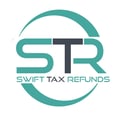Emergency call-out expenses
3.50
Employees sometimes have to travel to a permanent workplace unexpectedly or in an emergency. Where the cost of that journey would not qualify for tax relief in normal circumstances, it will not qualify for tax relief just because the journey was made in response to an emergency.
It makes no difference if the journey takes place outside normal working hours or if the employee is returning to the workplace having completed their normal duties there.
Example
Isabel is required to be a keyholder for her permanent workplace. One night she is called out by the police responding to a burglar alarm.
Isabel is not entitled to tax relief for her journey from home because it’s ordinary commuting.
3.51
Exceptionally, where an employee is obliged to perform duties at home and while travelling to an emergency at a permanent workplace, the travel may be regarded as travel between 2 workplaces. In such circumstances, the cost of that travel will qualify for tax relief.
To get tax relief, the employee has to:
- give advice on handling the emergency before starting the journey
- accept responsibility for those aspects appropriate to their duties from that time
- have a continuing responsibility for the emergency whilst travelling to the permanent workplace
Example
Jack is employed as a vet. He operates a surgery from his home. He also works at an animal hospital some distance away. It’s an objective requirement of his employment that he perform his duties at these 2 workplaces.
One night he needs to attend an emergency at the hospital. He is phoned at his home or surgery and immediately takes responsibility for the emergency and issues instructions on action to be taken.
While travelling to the hospital he uses a hands-free mobile phone to continue to control the response to the emergency. The journey is between 2 workplaces in the performance of Jack’s duties.
Jack is entitled to tax relief for the cost of this journey to the hospital.
